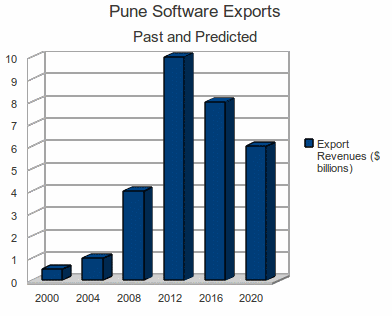Gandhiji once said India lives in her villages. The current times see a march towards converting the villages into industry land rather than sustaining the essence of villages with new technology. Pune based Pradeep Lokhande, who himself hails from Wai village (Satara), decided to dream big and reach out to the villages to realise his dreams. The result, Rural Relations, is an organisation that harnesses IT to develop villages.
Lokhande went about the basics alongs the lines of the Mahatma again:
“I embarked on a journey of discovery, to find out what constitutes the real India. Though I myself hail from a village, I knew that deep down there’s more to life than what I had seen or lived myself. I wanted to know the essence of the various traditions, cultures and soak in its thinking. It was a journey of 40,000 villages of which I have personally visited 4000, across the country. I tried to understand rural India’s administration methodologies, markets or the bazaar-haat systems and the process of the education system. In the process of my journey, I established direct contact with opinion makers in villages and started recording obscure details of the local economy. And in 1996, I made my first customers, Tata Tea and Parle to delve in the data that I had collected. Since then there has been no turning back.”
After that, Lokhande decided to take the computer revolution to the villages. The intention was not to make computer literates of people but at least to get them to touch, feel and try computers. So he began to install used computers in villages, particularly in secondary schools, where the interest and curiosity levels were very high. When he personally could not find the means and finance to provide infrastructure, he appealed to individuals, organizations and corporates to contribute used machines. Today he has been instrumental in installing 600 computers across 540 villages.
What I found most interesting in Lokhande’s philosophy was the concept of the Non-resident Villager, which he has turned into a movement to raise ideas, funds and hands for development. The idea is to get people from cities to adopt a village (typically a village that they have some past connection to), and use this network of NRVs to help the villages. “Each one of us is an NRV, for our roots do, in some way, come from the villages. So as an NRV, we can always reach out, support and contribute something to the development of rural India.” says Lokhande and it rings really true. This is a concept which is in tune with the concept of the NRI and offers a person a chance to lend a helping hand to what once gave him a life, if not in this generation, then to the generations before that. Roots matter, in India at least.
Those interested in participating in the NRV scheme can get in touch at nrv@ruralrelations.com.
Lokhande has more active concepts in execution under Rural Relations. Take a look at his next concept, Village Developers, these are over 300 trained local village youths across 9 states and most of them are connected with mobile phones and emails to facilitate all ground activities.
Or the concept of rural marketing he employs called The Rural Barometer, which is ‘experience backed by cutting-edge technology’; live, dynamic, and regular information, by region and by state, which is subscription-based to help understand the villager like never before, gain valuable insights, learn about competition, distribution and empowers one to forecast trends. Large multinationals like Hindustan Lever, Reuters, and even Microsoft have used Rural Relations’ expertise in this area.
Then there is the library movement, the Gyan-Key, which makes a library in every rural secondary school a reality. It is a unique concept – a library of the students, for the students and by the students. The library will be run by one of the girls (Gyan-Key monitor) from that village studying in class VI. Each library to start with will have minimum 150-200 books in that local language covering various subjects. To instil a sense of ownership, students will be encouraged to donate books, (regardless of their value) for ‘their’ library on their birthday, creating a feeling of belonging. The Rural Talent division is a talent bank endeavour for the villages under the umbrella.
Lokhande himself is “from very humble background” he claims and has done his graduation B.Com externally and admits to have “taken a less travelled path”. His proportions for investment of time and money are as clear as his concepts for development, “After 2000, I have been investing 40% for business, 40% for professional social activity & 20% for teaching”
I had a curiosity to find what he considered the greatest achievement ever since Lokhande started Rural Relations? To be sure, he has a clear and ready answer to that too. “In professional achievement, it’s a case study on rural relations in Philip Kotler’s book and in personal & social achievement – I have more than 6,00,000 letters from villagers & the satisfaction I see in the eyes of the students from rural areas.”
He has a team in place to handle the essentials, 13 people in office staff & 31
associates as village developers.
So Lokhande, where do you see yourself five years down the lane?
“Our goal for the next 5 years is to reach to all feeder villages of India, create 5,000 videos of changing villages & minimum 10,000 Gyan-Key libraries”
Ambitious? Not at all, if there is a will, there is not just one way, but many.


